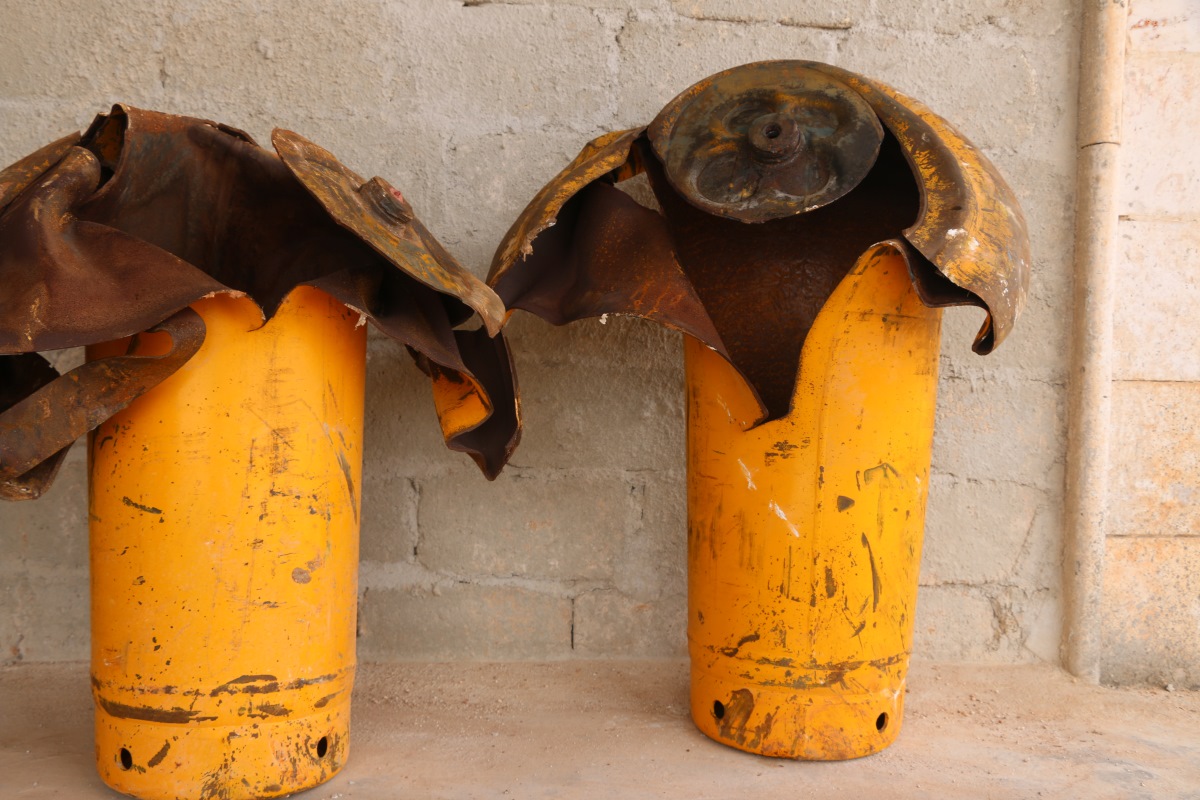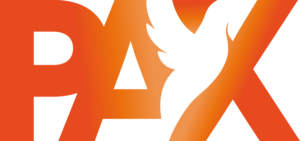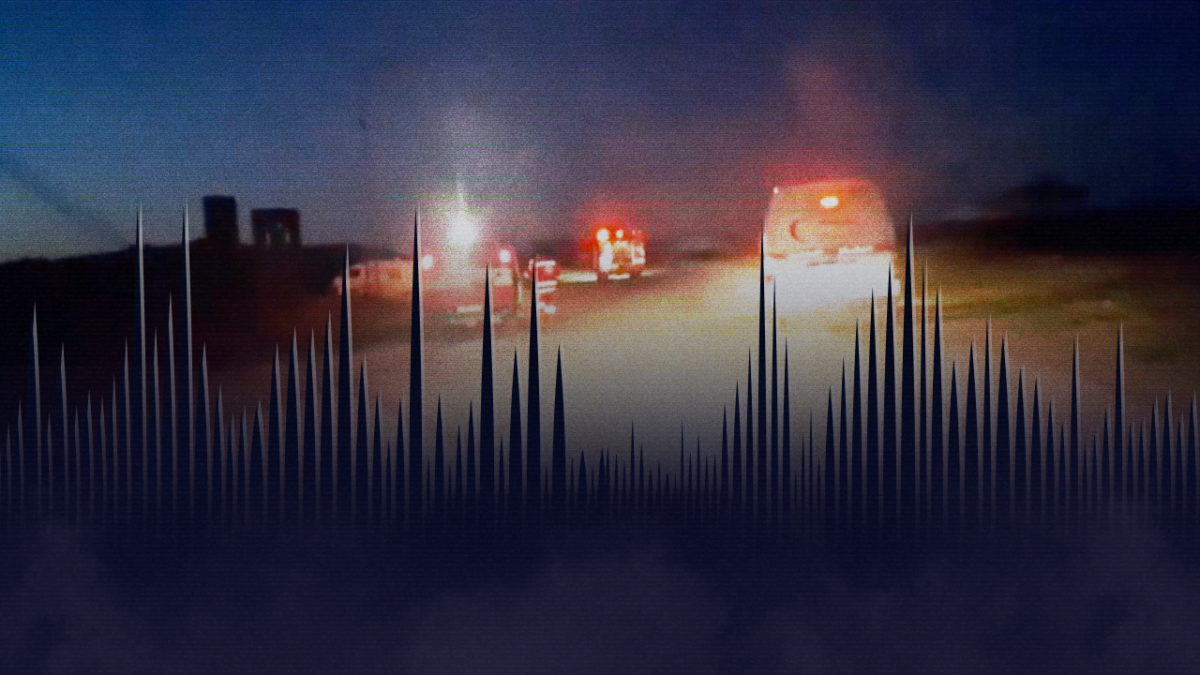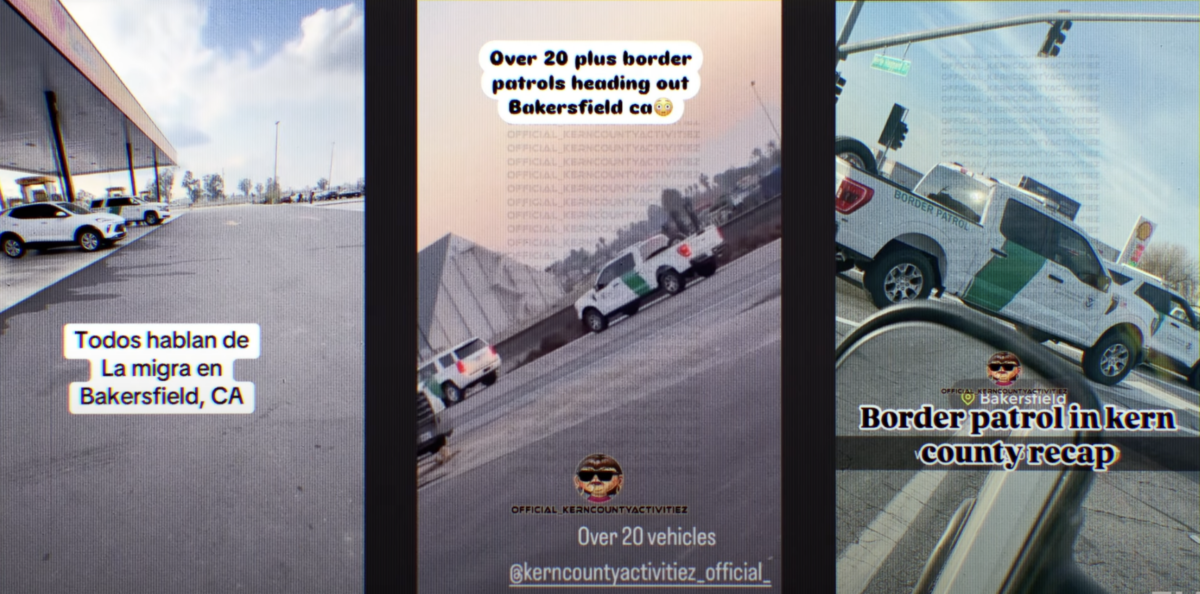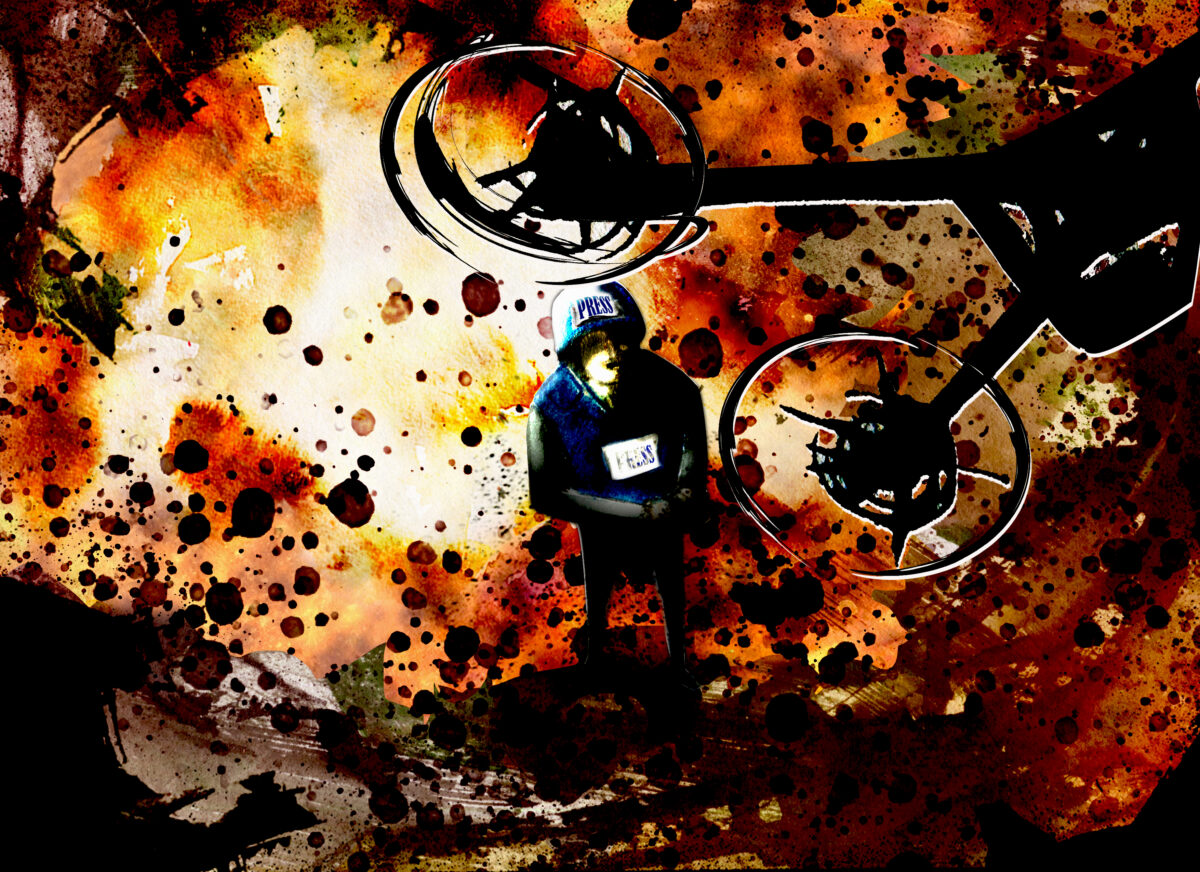Open Source Survey of Alleged Chemical Attacks in Douma on 7th April 2018
On April 7th 2018 reports began emerging of alleged chemical attacks on the city of Douma, in the rebel held pocket of Eastern Ghouta, Syria. Reports indicated that a significant number of people, including children, had been killed by these attacks. This report will assess and verify the open source information regarding these attacks, and draw conclusions from the available evidence.
All times are local.
Summary
- A large compressed gas cylinder of a type used in previous aerial chlorine attacks was filmed on top of the building where a large number of fatalities were documented.
- The number of dead bodies that can be established through open source data is 34+.
- Aircraft spotters reported two Mi-8 Hip helicopters heading southwest from Dumayr Airbase, in the direction of Douma, 30 minutes before the chemical attack in Douma, and two Hip helicopters were observed above Douma shortly before the attack.
- The Syrian Government has previously been identified as using Mi-8 Hip helicopters to drop chlorine cylinders on opposition held areas.
Reports of a Chemical Attack
Reports from the documentation group the Syrian Network for Human Rights indicated that there were at least two separate attacks involving chemical agents on the 7th April: one at 4pm near Sa’da bakery in Omar ben al Khattab St, which injured 15 people, and a second attack at around 1930 near al-Shuhada Square in Nu’man that killed 55 people and injured 860.
The Violations Documentation Center also reported two chemical attacks took place on April 7th 2018. As with the Syrian Network for Human Rights reports, the first attack was reported at 4pm near Sa’da bakery, with the VDC reporting claims from witnesses that chlorine was used. The VDC also reported the second attack at 1930 near al-Shuhada Square, and reported witness statements on the symptoms:
Dr. Jamal Rafie (pseudonym), told the VDC that the symptoms that he saw on patients “do not resemble chlorine attack symptoms. Chlorine alone cannot induce such symptoms because while it does cause suffocation, it does not affect the nerves. There were symptoms indicative of organic phosphorus compounds in the sarin gas category. But the smell of chlorine was also present in the place.”
Dr. Mohammed Kuttoub from the Syrian American Medical Society (SAMS) told the VDC that his colleagues in Eastern Ghouta saw symptoms on people that include: “pinpoint pupils, slow heartbeat, slow breathing, heavy foaming from the mouth and nose, and the burning of the cornea in some cases.”
The VDC also published the following graphic showing the locations of the attacks:
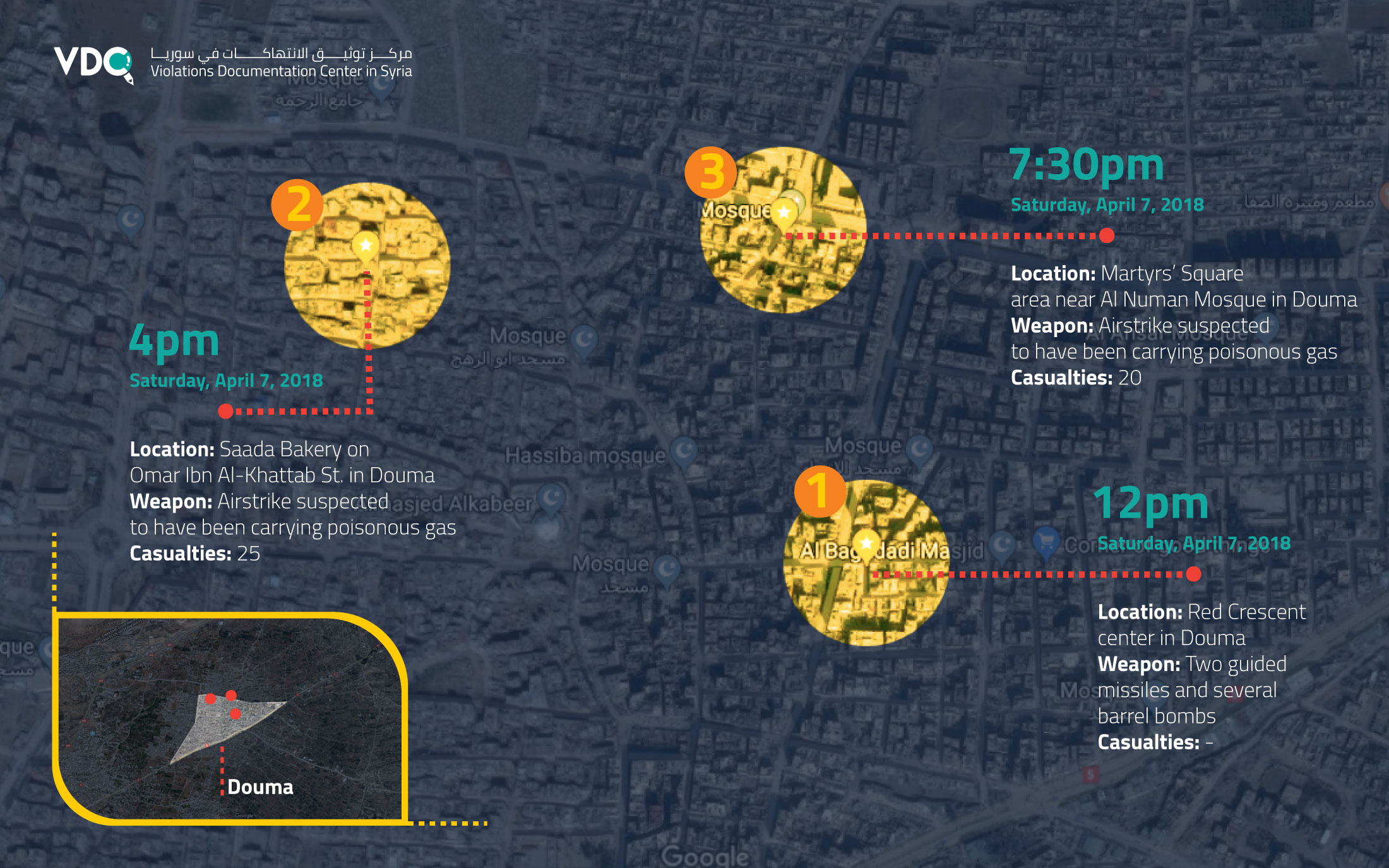
VDC map of attacks in Douma on April 7th 2018 (source)
Syrian Civil Defence, also known as the White Helmets, reported that a chemical attack at 1945 on the 7th April killed more than 43 people and injured over 500. They reported the dead victims displayed signs of cyanosis (a bluish discolouration of the skin), excessive oral foaming and corneal burns. Six living casualties were reported to have pinpoint pupils and convulsions. The report concluded the casualties had been exposed to “toxic chemicals; most likely an organophosphate element”.
Footage and Images
Footage and images posted on social media after the 1930 attack appear to depict a significant number of casualties, with many dead bodies located in a single building. Many of these bodies displayed symptoms consistent with the claims made in the Syrian Civil Defence statement and the VDC report.
Video 1, which is extremely graphic, was posted at 0020 on 8th April titled “#2018-4-7 Al Assad is shelling Duma with Chemicals. Horrifying massacre against civilians in Duma”. It depicts a large number of dead bodies spread across several rooms in what appears to be the ground (first) floor of a residential building.
Video 2, which is extremely graphic, was posted at 0346 on 8th April titled “2018-4-7 Witness the foaming from the mouth of the injured due to the exposure of civilians to sarin gas”. It documents more dead bodies spread across the second floor and stairwell of the same building as Video 1, as well as what appears to be a hole in the roof of the third floor.
Certain distinctive commonalities can be seen between Video 1 and Video 2, indicating they are filmed in the same building.

A old woman with a single sock pulled down, sprawled near the entrance to the building – Top: Video 1, bottom: Video 2

A doorway and the body of a child wearing a distinctive red and white striped top. Faces obscured – Left: Video 2, right: Video 1
Multiple other videos and images posted on social media appear to show the same building and the same casualties.
In total, at least 34 unique bodies appear across the two videos: 23 on the ground floor, 10 on the second floor and one on the landing of the stairs between the second and third floors.
Geolocation
Video 3, which is extremely graphic, was posted at 1748 on 8th April by the SMART new agency, an opposition media network. It shows bodies being removed from the same building that Videos 1 & 2 were filmed in, and taken out into the street during daytime.

The same doorway seen in Video 1 & 2 can also be seen in Video 3. Faces obscured. – Left: Video 3, Right: Video 1

A window cage next to the doorway can be seen in both Video 1 and Video 3 – Left: Video 1, right: Video 3

A doorway with the same design can also be seen in both Video 1 and Video 3 – Left: Video 1, Right: Video 3
Video 4, filmed by a local activist and posted on Youtube by Aljazeera at 2044 on 9th April, depicts what seems to be Russian military personnel visiting and entering this building. This event appears to be corroborated by a statement from the Russian Ministry of Defence (MoD) which claimed “representatives of the Russian Reconciliation Centre have explored areas of Douma… Results of inspection refuted all reports of chemical weapons use in the city” (archived)

The same doorway the Russian personnel enter can be seen in both Video 3 and Video 4 – Top: Video 4, Bottom: Video 3
By analysing Video 4 and Video 5, which both depict Russian personnel entering the same block, we can geolocate this building to 33.573878, 36.404793. This location is immediately South West of al-Shuhada Square, which matches with the reports from the Syrian Network for Human Rights and VDC.
Video 6, posted by Syrian Civil Defence at 2106 on 10th April, claims to show a “chemical gas canister… Same location as video of casualties”.
Important: video from 9 April, 7:02pm showing presence of chemical gas canister in Douma. Same location as video of casualties. Also same location that Russia visited reporting ‘no sign of chemical weapons’. pic.twitter.com/Sbz64cPi4w
— The White Helmets (@SyriaCivilDef) April 10, 2018
Taken from the top of a building, it shows a hole in the roof with a yellow compressed gas cylinder. The cameraman then swings the camera around, allowing the position to be geolocated, identifying it as the roof of the building at 33.573878, 36.404793.

A still from video 6 (bottom) compared to satellite imagery of the location, demonstrating the viewpoint is from the roof of the building at 33.573878, 36.404793
We can therefore conclude that Videos 1-6 were all filmed in the same area. All videos featured the same building which contained the large group of bodies depicted in Videos 1-2. Video 6 shows that this same building appears to have been hit by a compressed gas cylinder which broke through the roof.
Examination of munition
Following the attack, the remains of two yellow compressed gas cylinders were filmed and photographed. As described above, one gas cylinder was filmed on the roof of the building where a large number of fatalities were documented. A second gas cylinder was also filmed at a yet unidentified location:
The external modifications on the above cylinder are particularly interesting as they are consistent with modifications seen on other gas cylinders used in other reported aerial chlorine attacks. Very similar modifications can been seen in the following video from August 2017 in Khan al-Assal:
Yellow gas cylinders of the same type, with and without external structures, have been documented at the site of alleged aerial chlorine attacks since 2014, and were used on multiple occasions during the siege of Aleppo:
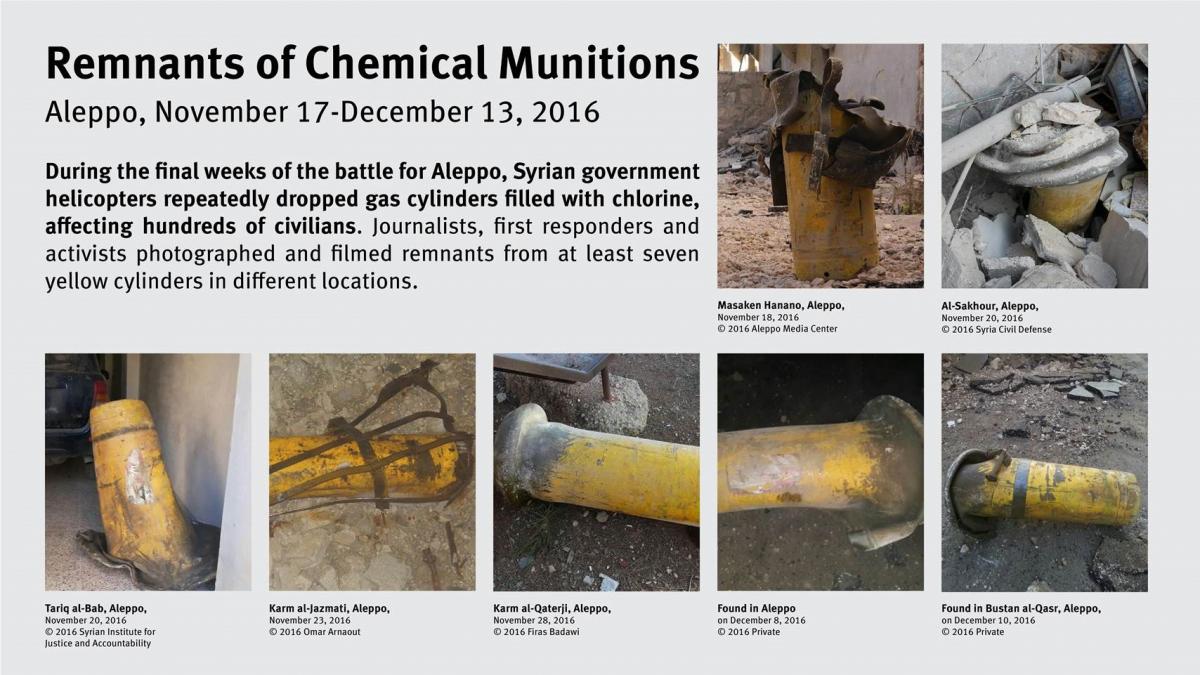
Human Rights Watch graphic showing yellow gas cylinders used in multiple attacks in Aleppo in late 2016 (source)
The most recent attack where yellow gas cylinders were documented following a reported aerial chlorine gas attack was the February 4th 2018 Saraqib attack, where two cylinders were photographed after being recovered from the attack site:
The OPCW has also investigated some of the attacks where yellow gas cylinders were used in aerial chlorine attacks, confirming they were dropped from helicopters. Aircraft observers that are part of the Sentry Syria network observed two Hip helicopters heading southwest from Dumayr Airbase, northeast of Damascus, in the direction of Douma, 30 minutes before the chemical attack in Douma, and two Hip helicopters were observed above Douma shortly before the attack. Hip transport helicopters have also been linked to previous aerial chlorine attacks.
With allegations of Sarin use, it is important to note that these yellow gas cylinders are not associated with the use of Sarin, and as Sarin is a liquid a compressed gas cylinder seems an unlikely method of delivery for Sarin. Possible explanations for the allegations of Sarin use may be a result of the severity of the symptoms presented, of an undocumented munition being used, or another chemical agent being used that presents symptoms that could be confused with Sarin use.
Conclusion
Based on the available evidence, it is highly likely the 34+ victims killed in the 1930 attack on the apartment building near al-Shuhada Square were killed as a result of a gas cylinder filled with what is most likely chlorine gas being dropped from a Hip helicopter originating from Dumayr Airbase.
Bellingcat’s research for this publication was supported by PAX for Peace.



